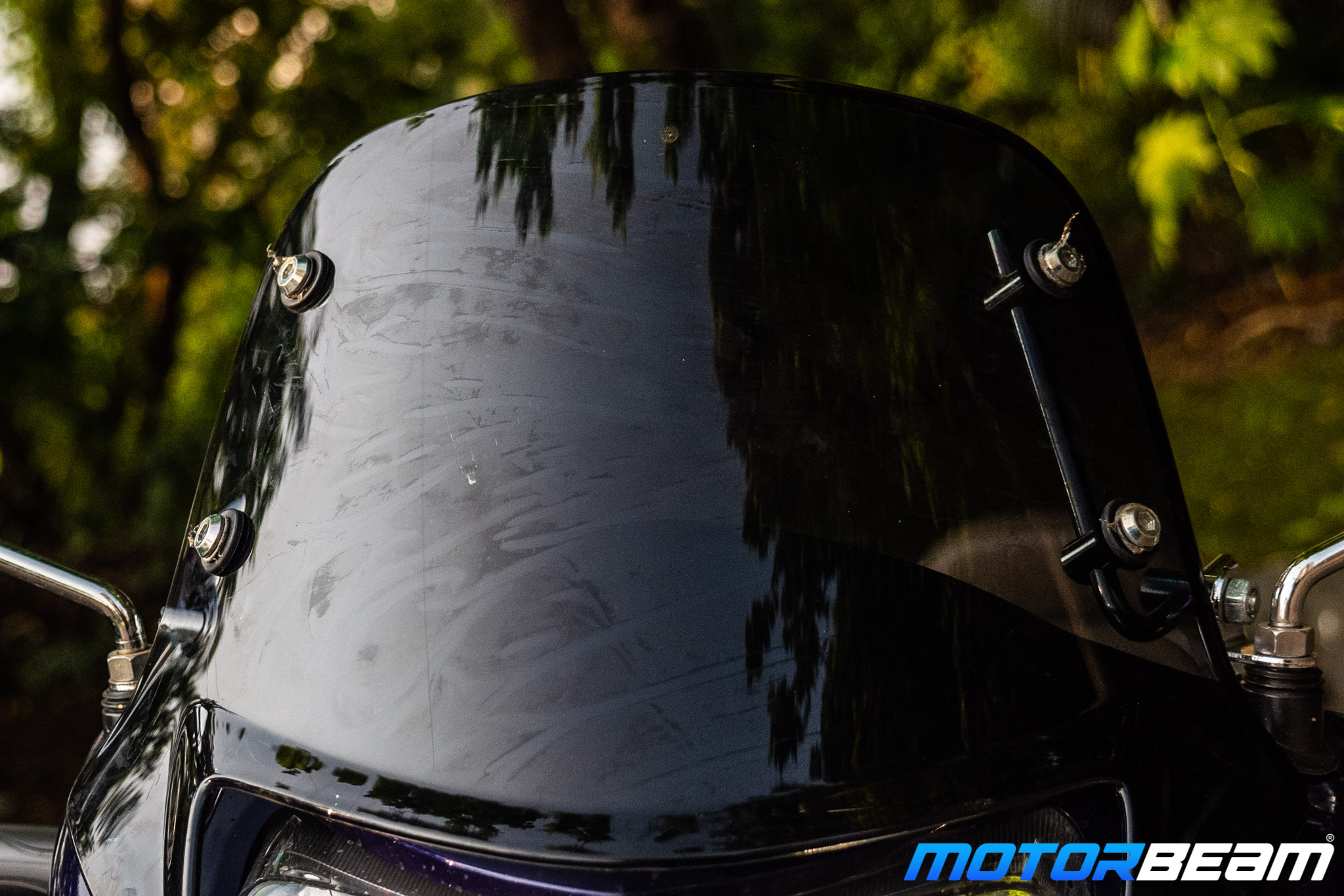2020 TVS Jupiter Classic Test Ride Review
We review the BS6 version of one of the highest selling TVS products.
We review the BS6 version of one of the highest selling TVS products.
Home » Bike News » TVS Jupiter » 2020 TVS Jupiter Classic Test Ride Review
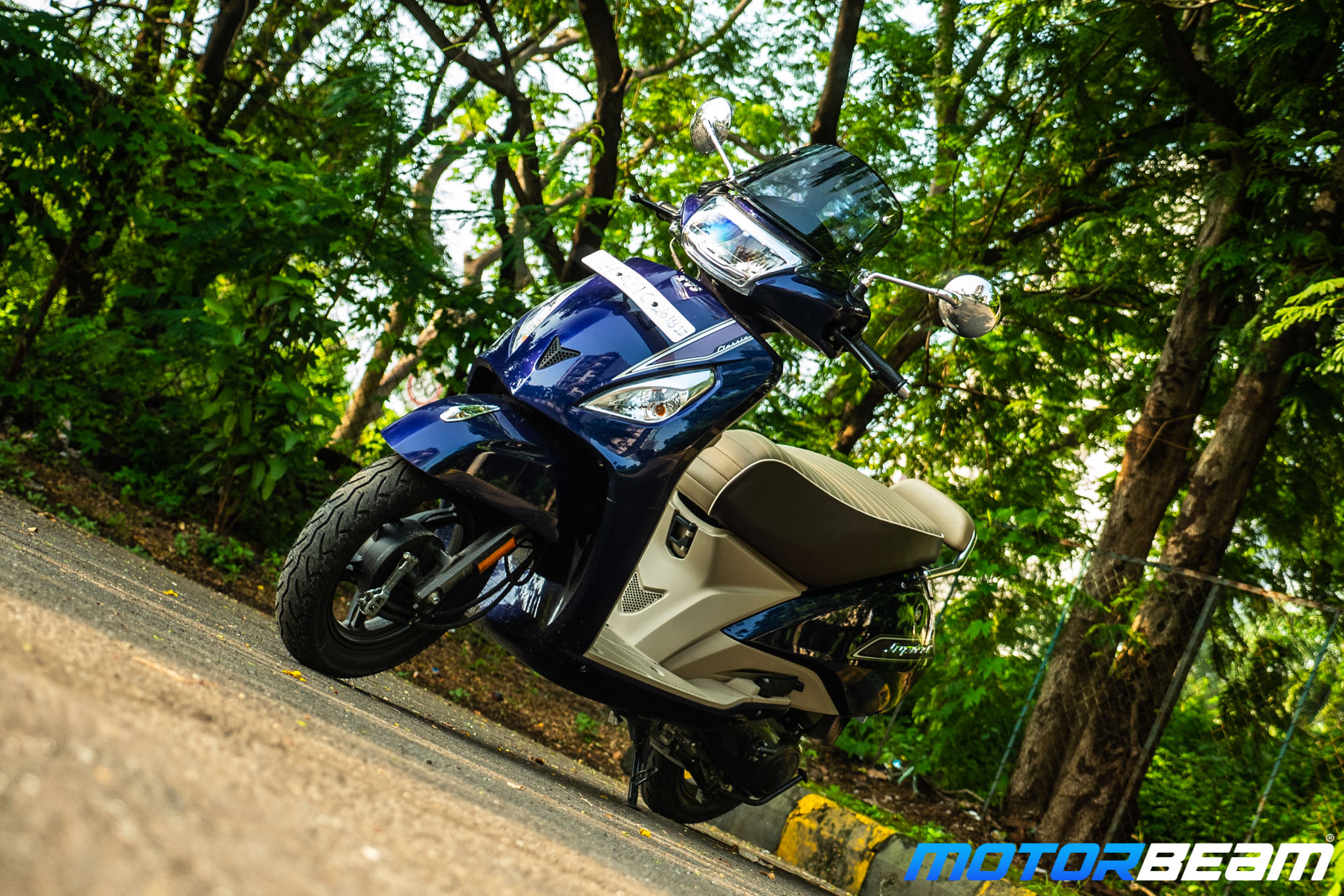
Bike tested: TVS Jupiter Classic; Road Test No. 1246; Test Location: Mumbai
Price OTR Mumbai: Rs. 88,160/-
The TVS Jupiter now comes with FI and it has become better in some aspects
Gearless scooters have become the go-to thing for many people to satisfy their commuting needs. Over the years, we’ve seen numerous offerings from many brands but one of the most successful indigenous ones has been the TVS Jupiter. The TVS Jupiter came out to put a dent on the Honda Activa’s sales figures. While it has done so, it hasn’t really beaten it overall. For 2020, TVS has updated the Jupiter with some handy and practical features along with TVS’ EcoThrust FI, which improves the efficiency of the scooter. We recently got our hands on the BS6 Jupiter Classic, and here’s a detailed report of what we think about it!
Motor Quest: TVS introduced the Jupiter in 2013 and it took the market by storm, thanks to the impressive set of features at an aggressive price. Over the years, the Jupiter has stayed true to its nature and has remained a versatile and practical offering in the market. While the BS6 Jupiter might not look very different from the BS4 model or even the first model, the scooter has become better overall in various aspects.
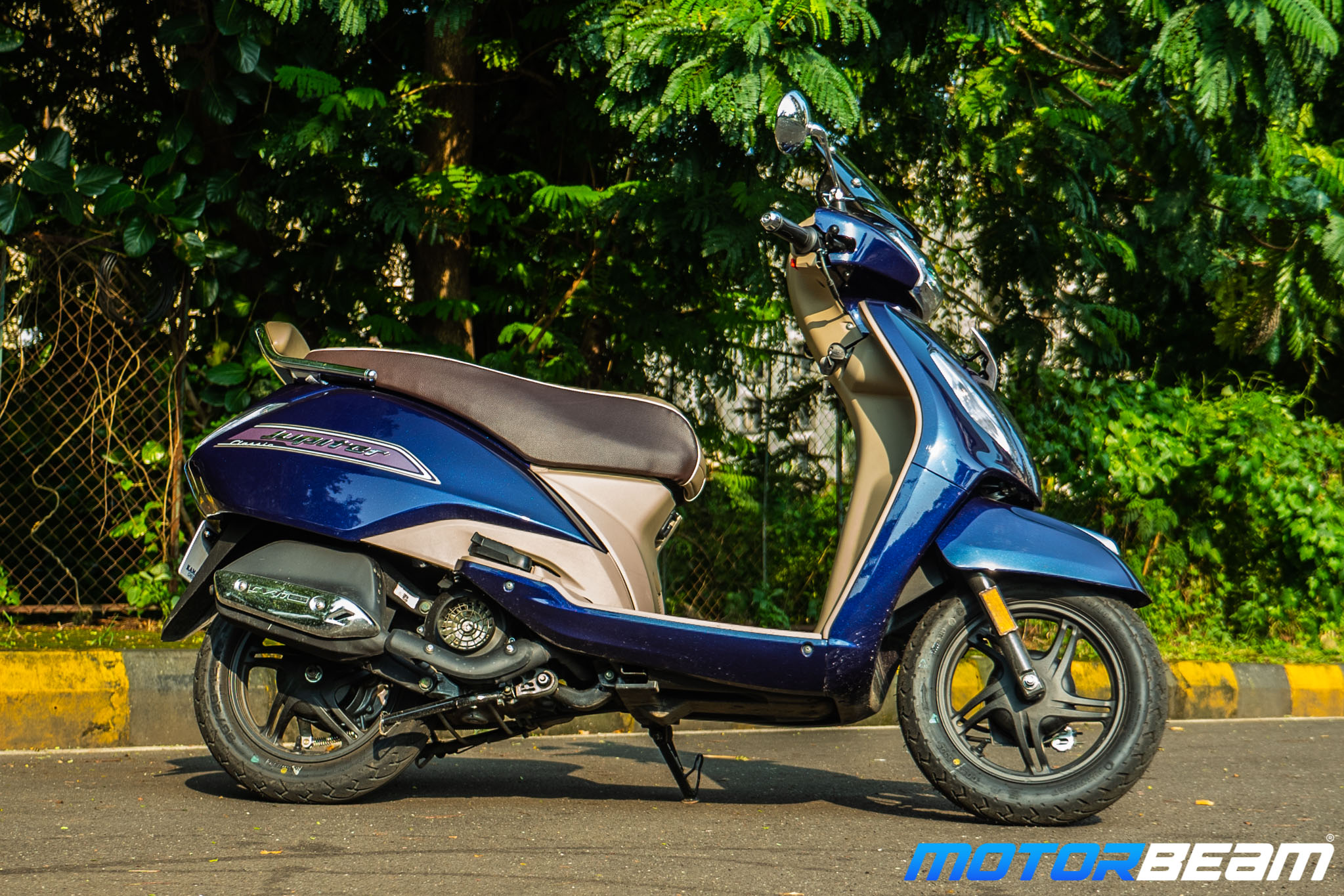
Styling: Like most BS6 scooters, the TVS Jupiter has also retained its overall design. The scooter isn’t too different from the BS4 variant, but there are some noticeable bits. The scooter gets alloy wheels, a lot of beige panels, a tall tinted windscreen, chrome mirrors, dual-tone seat, LED tail lamp and an updated LED headlamp. To give it a more premium look and increase pillion comfort, you also get a backrest which gets cushioning as well. Apart from this, the Jupiter Classic also gets a new colour option, namely the Indiblue. To summarise, the BS6 TVS Jupiter Classic looks good and gives off a Vespa vibe styling-wise. The tall visor, beige panels, dual-tone seat, and the backrest, all make it look better than before.
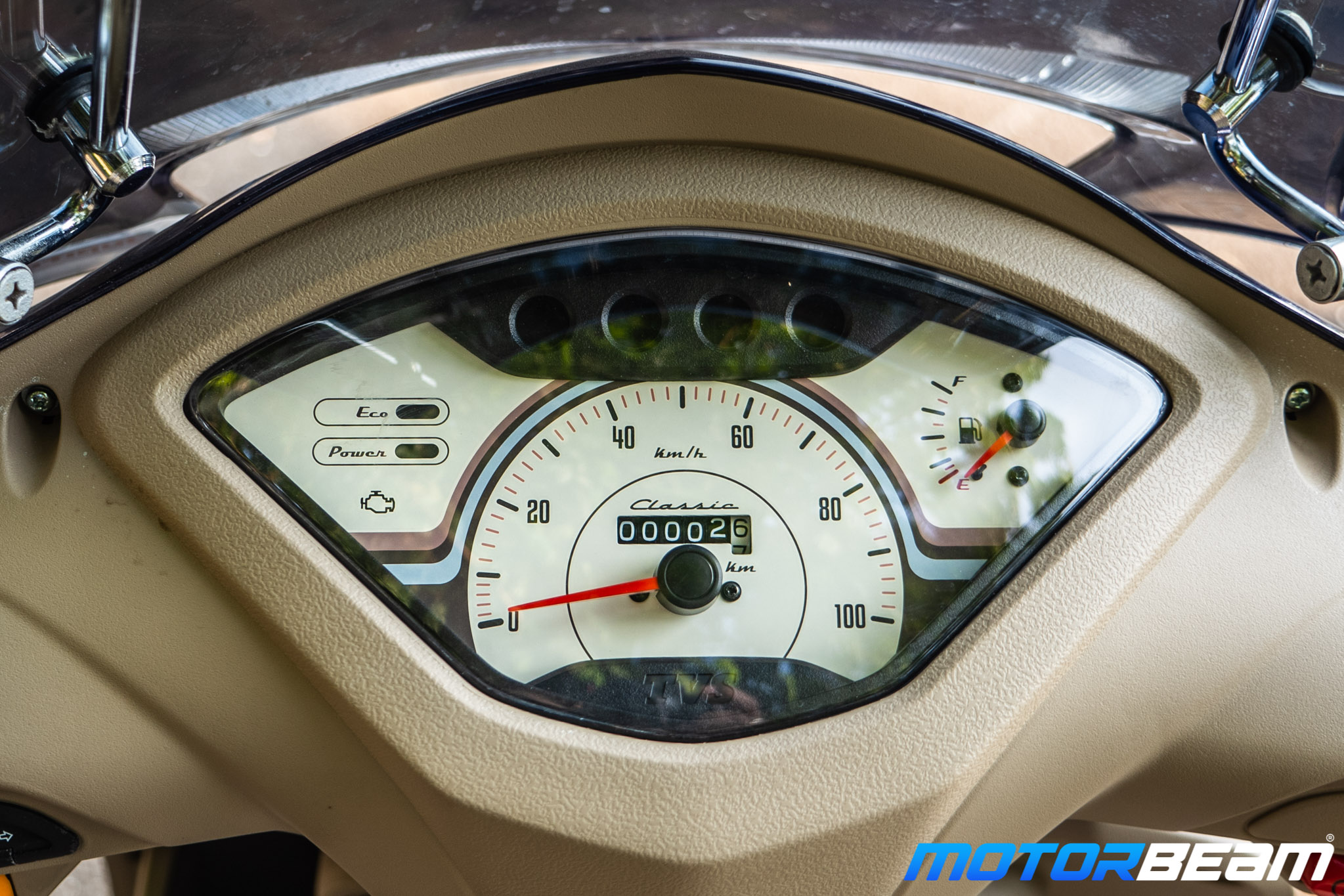
Instrument Cluster and Switchgear: TVS has retained the old instrument cluster and switchgear setup for BS6. The setup is pretty ‘Classic’ and gets just an additional engine malfunction and a low-fuel telltale light along with an analogue speedometer, odometer, eco mode light, and a fuel gauge. All of it looks good in beige, though, and is easy to read, but a digital display is dearly missed. The switchgear has also remained the same, and the quality is up to TVS standards. We think an engine-kill switch would’ve been a nice addition, though. To summarise, the Jupiter Classic has remained unchanged in this department, and it can definitely do better here with some modern additions.
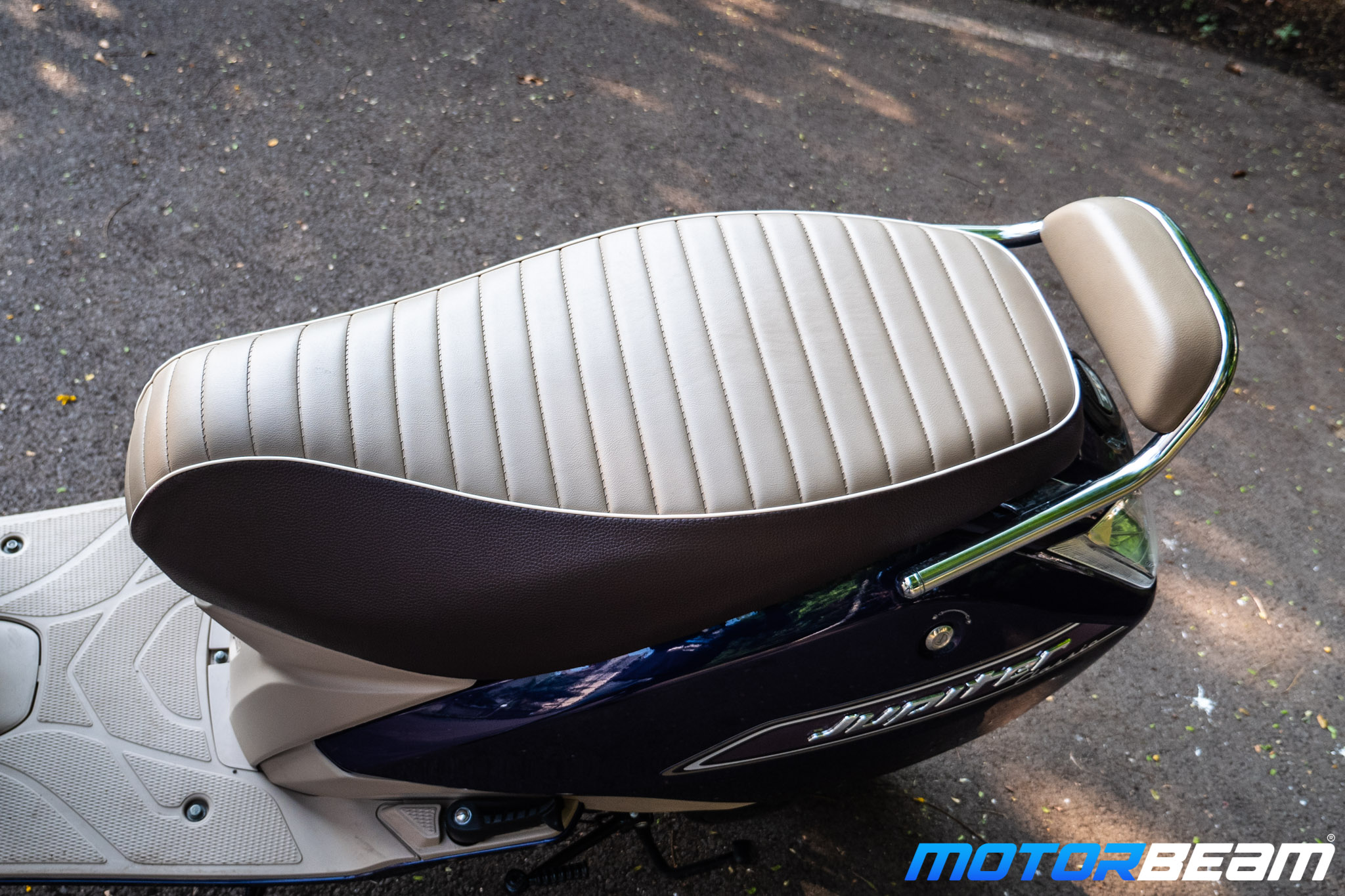
Ergonomics: The Jupiter has always been a comfortable scooter, and it still is. The posture is upright with a spacious footboard, and even tall riders will have nothing to complain about here. The seat is long as well and gets superb cushioning. Even the pillion sits comfortably and relaxed, thanks to the cushioned backrest. We also like the fact that TVS has added a utility box upfront to put your phone in while you make full use of the new USB port. Speaking of storage, the under-seat storage has increased as well, but it still cannot swallow a full-face helmet. The external fuel-lid is a practical addition too and helps you refuel effortlessly. Lastly, the chrome mirrors are decent as well, but they tend to vibrate at times which hinders the rearview.
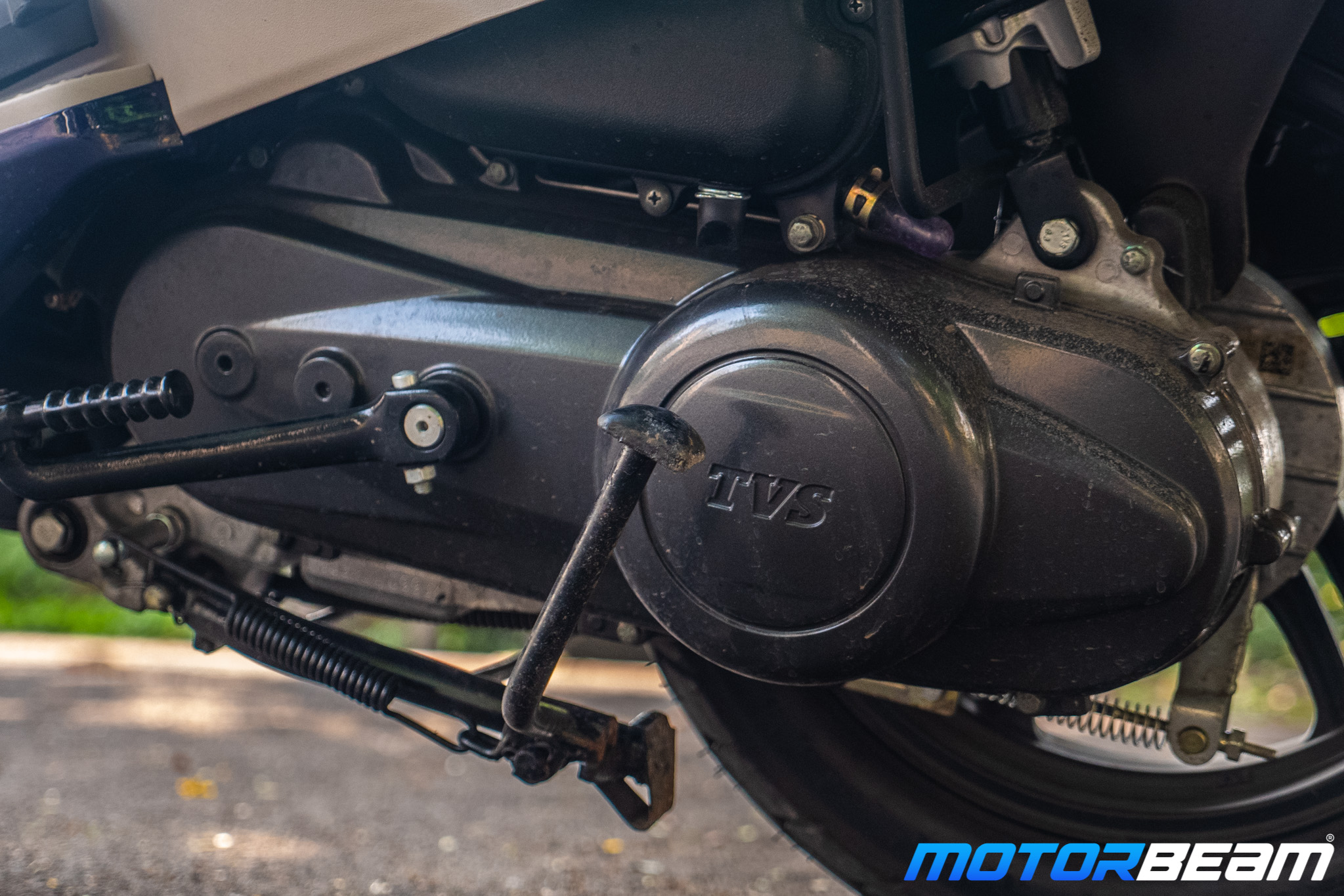
Performance: The performance has remained unchanged following the BS6 trend, and it’s a good thing. The 109.7cc motor makes 7.47 PS of power at 7000 RPM and 8.4 Nm of torque at 5500 RPM. The main and only difference engine-wise is the addition of ET-Fi (EcoThrust Fuel Injection). This has made the scooter smoother and peppier overall. The low-end grunt is good, and the midrange feels punchy too, while the top-end feels flat. The scooter feels pretty linear when you push it and there is no jerkiness to it. However, the sweet spot is between 45-60 km/hr.
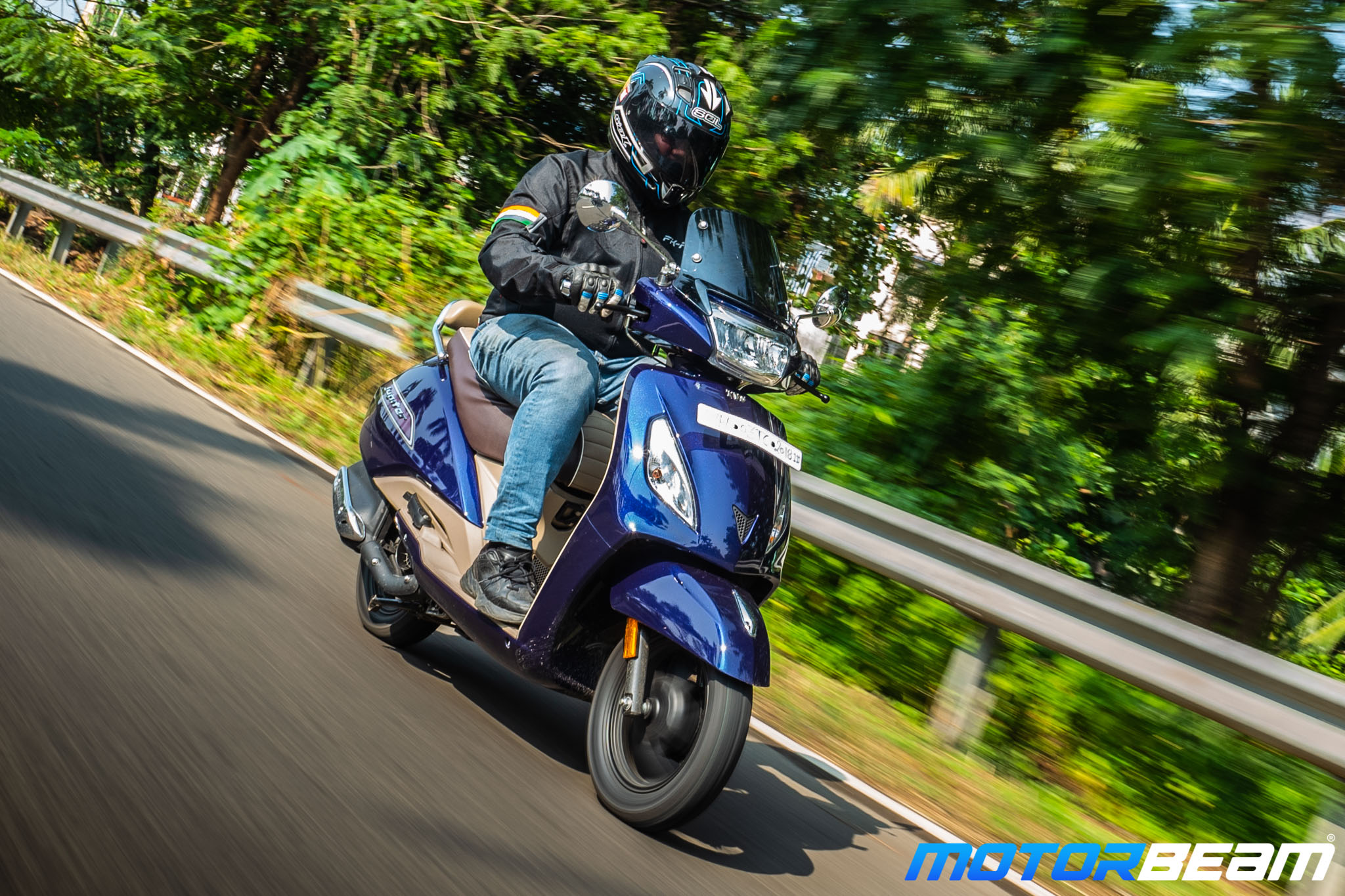
The engine has retained its previous performance figures, but it has become smoother and more linear
TVS has also claimed that Jupiter is now 15% more fuel-efficient. The Jupiter was already more fuel-efficient than its direct rivals in its previous iteration, and the bump in efficiency has made it even better. The scooter returned 50 km/l during our test. Along with the increase in efficiency, the Jupiter also has an additional 1-litre fuel capacity, which rounds up the total range to about 300 kms. All in all, the addition of FI has made the Jupiter better in terms of refinement and efficiency. However, we noticed a lot of vibrations in the accessories while riding, which makes you feel that the scooter is not refined.
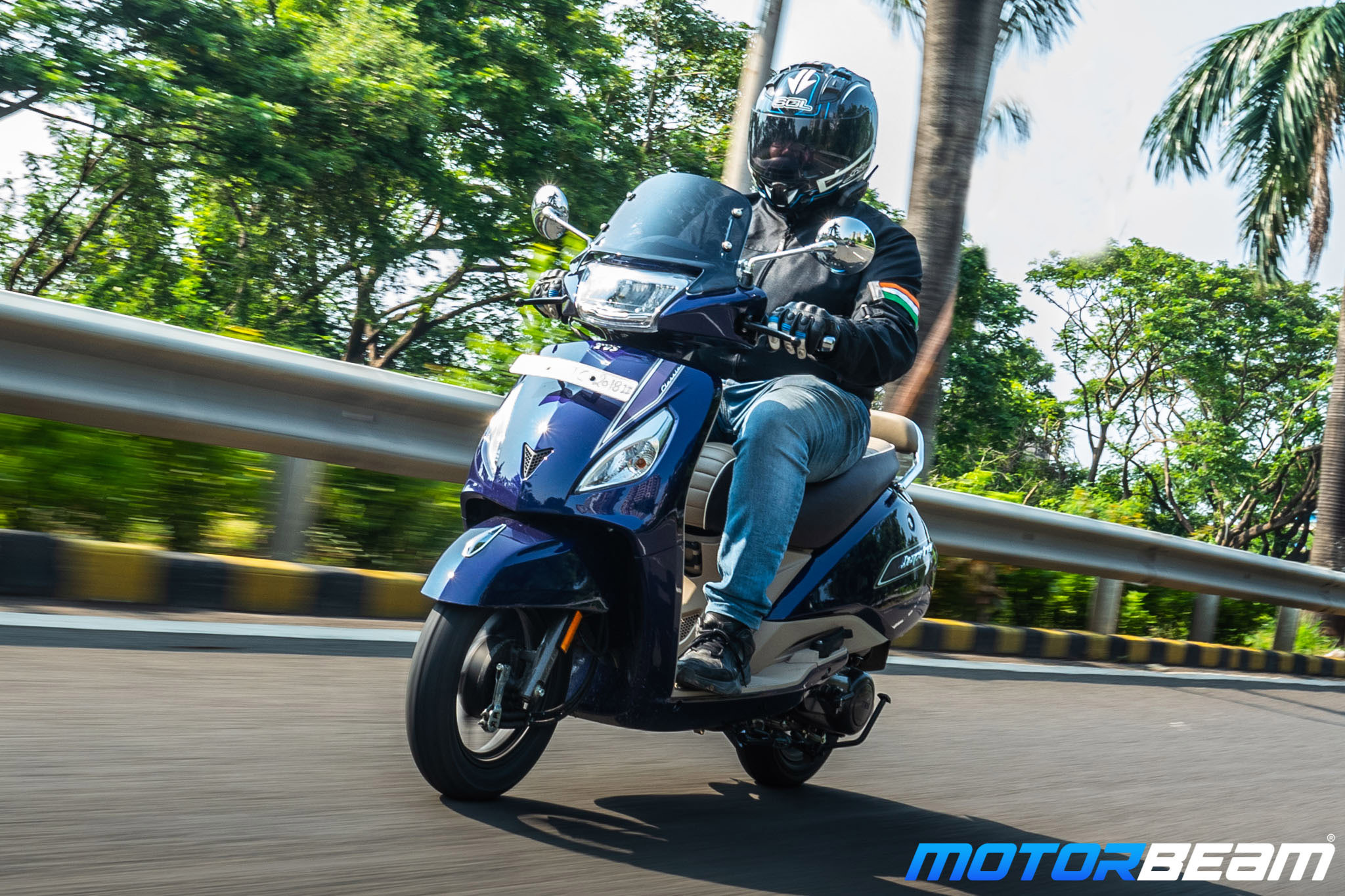
Riding Dynamics: As the Jupiter retains its ergonomics, the riding dynamics are similar too. The rider’s triangle is upright and comfortable for city duties. At 765 mm, the seat height is on the lower side too, which makes the Jupiter suitable for shorter riders as well. The Jupiter gets telescopic front suspensions and gas shocks at the rear. The difference for BS6 is that the rear suspension is now adjustable across all variants. The overall suspension setup is on the softer side as it is, though, and the ride quality qualifies as plush. However, the soft suspension means that the Jupiter is not suitable for spirited riding.
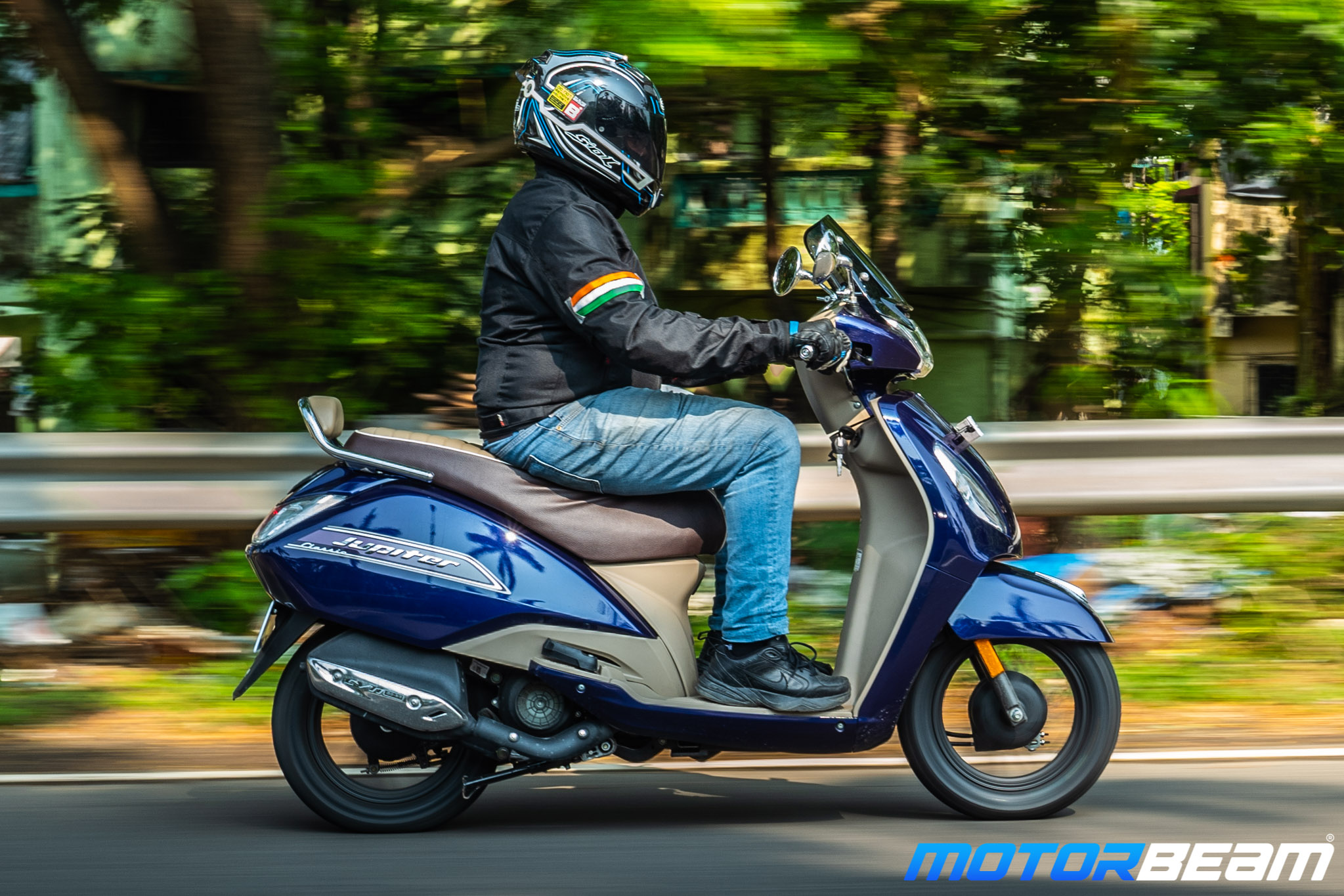
The TVS Jupiter is an ideal commuter scooter, and it does its duty well
Weight-wise, the Jupiter Classic is 1 kg heavier than the other variants, thanks to the additional accessories. While the weight isn’t felt, though, and the scooter remains easy to manoeuvre. One downside of the BS6 Jupiter is its brakes. TVS has removed the disc brake from the Classic variant and the drum brakes don’t really perform well. The sizes are standard at 130 mm but we dearly miss the disc brake which offered much better stopping power. It seems that TVS did this to keep the price in check, but it’s still a step in the wrong direction. To summarise, the TVS Jupiter still remains a superb commuter and has good riding dynamics for tight city roads.

Verdict: For 2020, the TVS Jupiter is available in 4 variants, namely Standard, ZX, ZX with Disc, and the Classic and they cost Rs. 80,212/-, Rs. 82,707/-, Rs. 86,667/- and Rs. 88,160/-, respectively. These are not the lowest prices in the segment, but the Jupiter is still good value for money. There is good equipment on offer, some being even better than its direct rivals, and the ride comfort is super too. The Jupiter is also suitable for all variety of riders and ET-Fi makes it easier on the pocket too. However, we would recommend the ZX Disc variant over the Classic as it makes more sense and the only major difference is the absence of a windscreen and a backrest. The ZX Disc variant is cheaper too and gets TVS’ silent start system as well over the Classic variant.
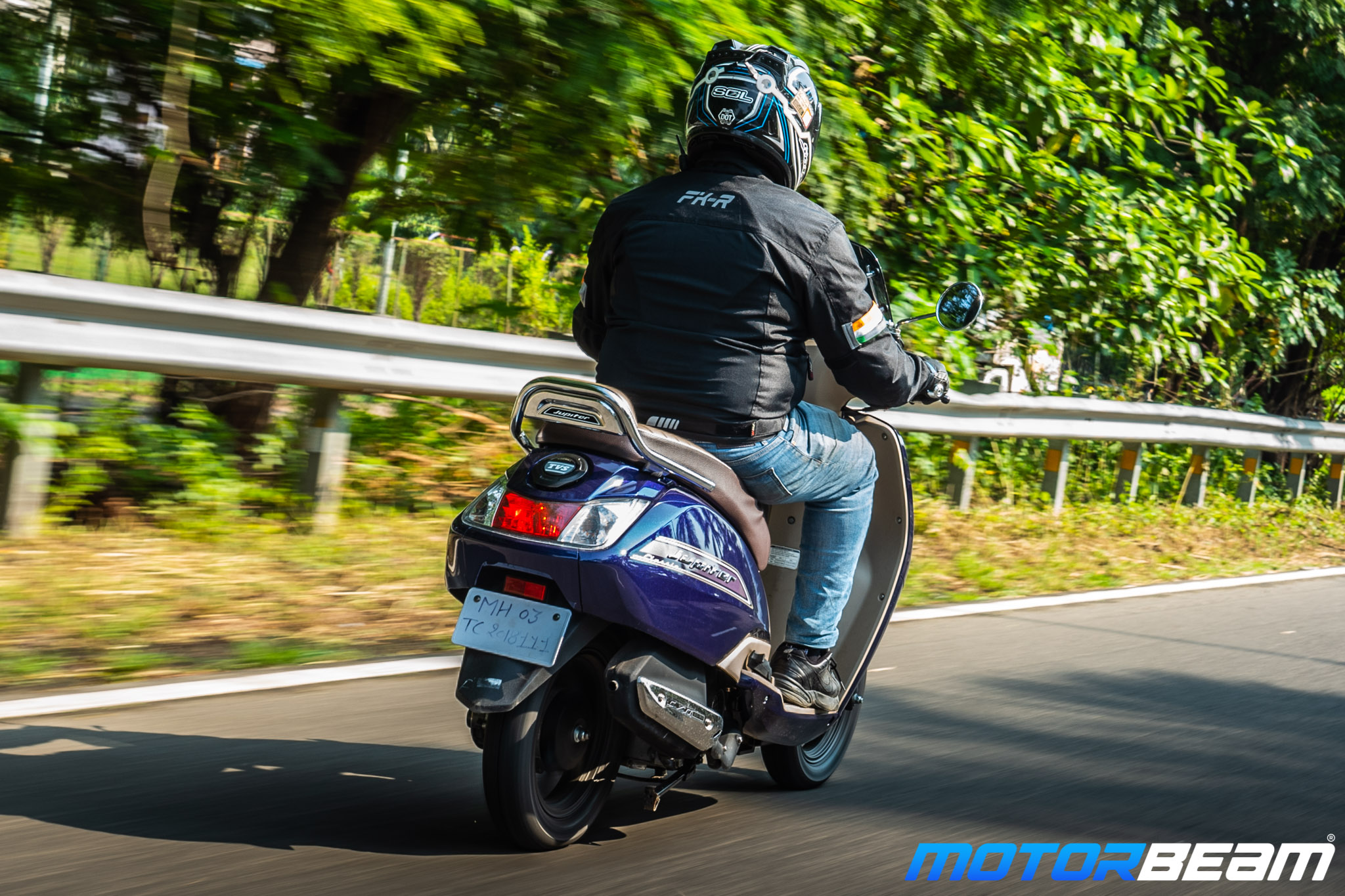
What’s Cool
What’s Not So Cool
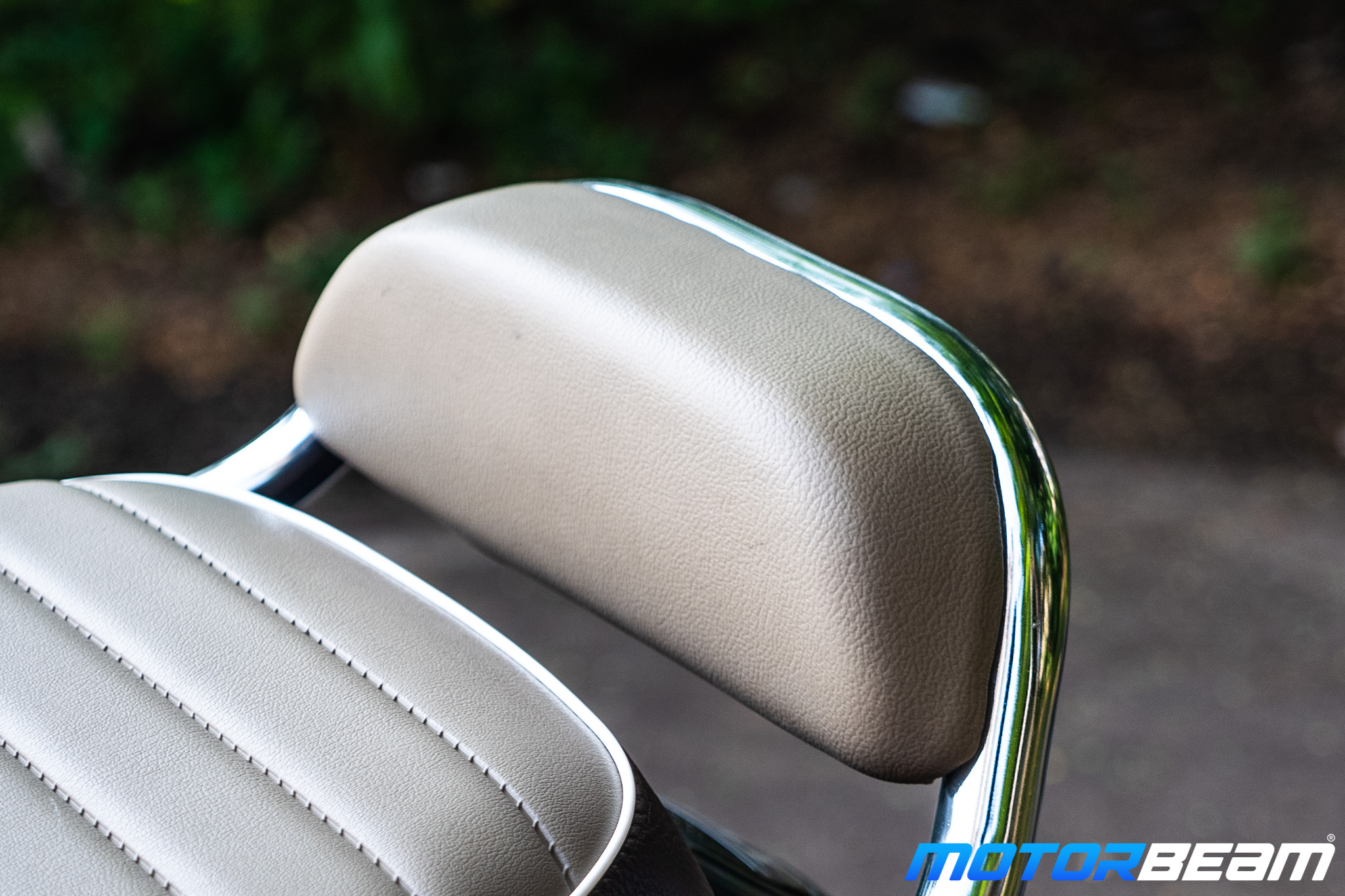
* Engine: 109.7cc, Single-cylinder, Air-cooled
* Power: 7.47 PS @ 7000 RPM
* Torque: 8.4 Nm @ 5500 RPM
* Transmission: CVT
* Top Speed: 80 km/hr
* Fuel Consumption: 50 km/l
* Fuel Type: Petrol
* Suspension: Telescopic Forks (Front), 3 Step Adjustable Coil Spring (Rear)
* Tyres: 90/90/12 (Front), 90/90/12 (Rear)
* Brakes: 130 mm Drum (Front), 130 mm Drum (Rear)
* Length x Width x Height (mm): 1834 x 678 x 1286
* Wheelbase: 1275 mm
* Seat Height: 765 mm
* Ground Clearance: 150 mm
* Fuel Tank Capacity: 6-litres
* Kerb weight: 109 kgs
